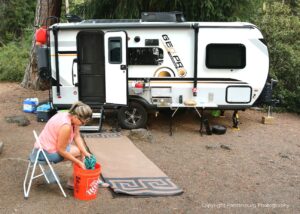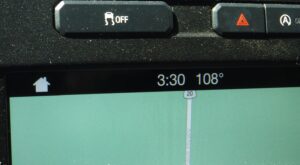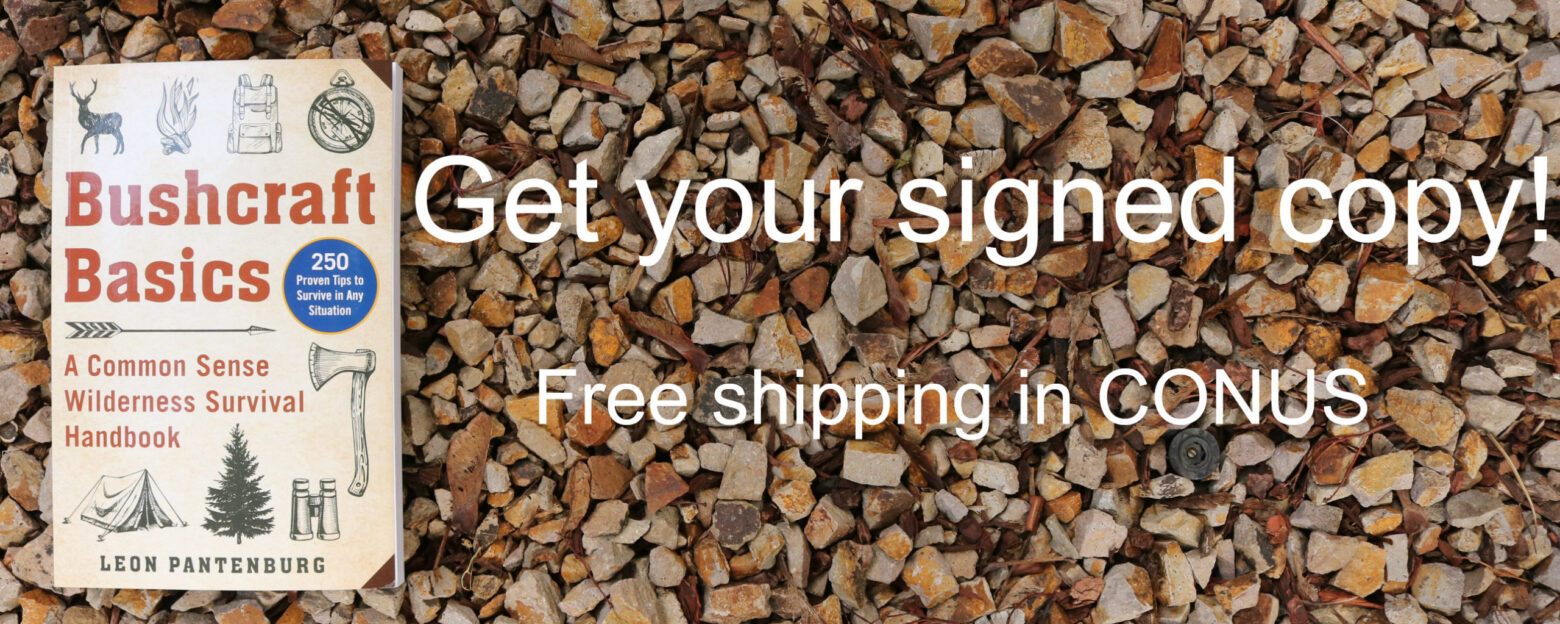The recent Northwest heat wave caught my wife, Debbie, and me camping in our new camper off-grid.
Here are some things I learned.
By Leon Pantenburg

NEVER go camping without at least one five-gallon bucket. Debbie used ours to wash clothes.
This whole RV/camper thing is a new concept to me. My philosophy has always been that if you have to have all the comforts of home, just stay home. I abhor the idea of “glamping.”
But my wife and I decided to give the RV lifestyle a try so we could travel more. There were some music festivals to attend, friends to visit and national parks to explore.
The plan was to leave our Mississippi home in May to avoid the heat. So we did. Then we hit unseasonably hot weather for 15 days across the southwest, followed by record-breaking temps in Boise. The grand finale was Oregon heat that was 30 degrees higher than normal.
The trendy, off-grid camper we bought last spring proved to be woefully inadequate for this particular natural disaster or off-grid situation. The air conditioning couldn’t cool the trailer. The solar panel didn’t supply enough juice to re-charge the batteries. That meant the refrigerator couldn’t keep the food cool. With no AC, the camper interior was an oven. The gadgets, doo-dads and electronic thingys didn’t work in these extreme conditions.
The camper didn’t have a fair chance to prove itself. I’m not sure any RV could have handled the extreme temperatures and weather conditions!
We camped at Suttle Lake, 12 miles from Sisters, Oregon. Temperatures reached 110 degrees at camp. Nearby Redmond recorded a new record high of 115 degrees.

My pickup dashboard showed record high temperatures.
For decades, Deb and I were hardcore backpacking and tent and tarp campers. Within a couple of days, we reverted to the old school tools and techniques that had served us well.
This worked:
Premium coolers can be worth the money: I’m guessing most high end coolers are used to keep adult beverages cool. There is probably a fashion statement here somewhere – expensive toys can be trendy and peer pressure may dictate that you need a name brand item. But for an afternoon football, golf or soccer game, a bucket filled with ice can serve just fine.
If you ever have to keep prescription medicines cool (think insulin), a premium cooler could be a Godsend. The cheap Igloo 48-gallon cooler (bought at the Sisters Bi Mart) kept ice for about 24 hours. My Patriot 48-gallon cooler can keep ice for five days in 100+ degree weather. (We left the Patriot at home – after all we had a refrigerator in the camper!) The lodge at Suttle Lake was out of ice by mid-afternoon. I had to drive 24 miles round trip to Sisters, Oregon to get more ice so our food wouldn’t spoil.
Cool off frequently. Stay cool by not getting overheated. We were camped next to the lake, and frequent dips in the water kept us from getting overheated. My office supervisor, Naga, a black Lab, loves this part. She would retrieve a ball thrown in the water to the point of exhaustion if we’d let her.
A bandanna or hand towel soaked in water and worn around the neck is another good cooling technique. Wear a broad-brimmed hat and long-sleeved shirt. Stay out of direct sun as much as possible.
Take quick trips and maximize the vehicle air conditioning. Since I had to go get ice anyway, I’d wait until the heat of the day, and Naga and I would take off. The truck was cool, and it offered a respite from the outdoor heat.
Follow the shade: Our campsite was shady most of the day. But there were always hot spots when the sun broke through. We had several tarps along to create shade if needed.
Know how to make tarp shelters.
Make lots of tea for hydration. I have a hard time forcing myself to drink enough water when the H2O is the temperature of bath water.
Making tasty herbal sun tea can help a lot. Put tea and water in a clear container in the sun. Soon you will have a beverage that is more palatable. Put ice in it, and you have a refreshing beverage that will help keep you hydrated. Whatever – you need about a gallon of water daily under normal conditions. During hot weather, you need more.
Solar power is wonderful. When it’s sunny and it works.
The solar panel on top of the camper worked OK. But when it was in full or partial shade, the panel couldn’t keep the camper’s batteries charged.
On the other hand, a smaller set of solar panels we had did charge some of the smaller batteries that powered laptops and phones.
Keep battery packs charged: My wife and I work online, and anywhere we can plug in a laptop is the home office. (Right now, the office is a picnic table overlooking a lake!) We use a collection of batteries to power everything.
We never let batteries get completely drained. Every time a vehicle goes somewhere, there is a battery being charged.
Don’t forget five-gallon buckets: Don’t go camping without taking a couple of the big containers along. They are useful for everything, from washing clothes to carrying water.
Then there’s this:
Nobody want to go camping when it’s really hot and uncomfortable. But this was a good practice for a real disaster. We came out of the heat really well because we didn’t abandon our tried and proven gear for the new camper toy.
We also didn’t put all our eggs in the same basket by relying solely on the camper. As an aside, that camper is still on probation. It better be earning its keep!
Lessons learned!
Please click here to check out and subscribe to the SurvivalCommonSense.com YouTube channel – thanks!


Leave a Reply